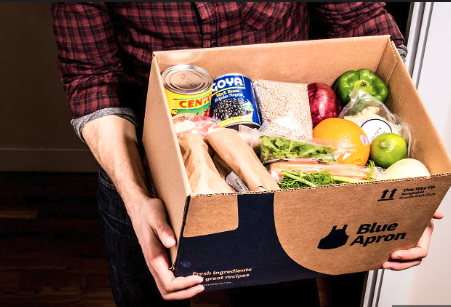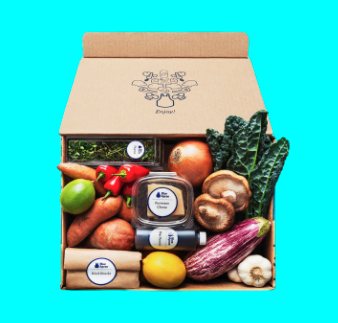

Like e-commerce, the popularity of meal kits saw a significant surge during the COVID-19 pandemic, as consumers increasingly turned to online shopping for ready-to-prepare meals delivered straight to their doorstep. Although the concept of meal delivery isn't new—the modern meal kit trend is a more recent development. Pioneered a little over a decade ago by companies like Hello Fresh and Blue Apron, today's meal kits offer complete meals with pre-portioned ingredients, ready to cook and serve, along with easy-to-follow instructions.
The convenience of home delivery, coupled with the elimination of meal planning and grocery shopping, has made meal kits a hit with millions of households. As a result, the industry continues to experience substantial growth.
As the meal kit industry continues to grow, ensuring that food arrives at consumers' doorsteps fresh and undamaged is more crucial than ever. Insulated packaging has become a vital component in the packing and shipping process, without which companies risk a flood of customer complaints and a significant loss in customer satisfaction.
The Importance of Proper Meal Kit Packaging
Meal kits offer consumers a variety of options, from heat-and-eat pre-cooked items to cook-and-eat kits that include fresh, raw ingredients, spices, sauces, and a recipe. Consumers can choose from online subscription services or kits delivered or picked up from local restaurants and retailers. Regardless of the type of meal kit, one thing remains constant: the need for effective packaging.
Choosing the right materials is essential to ensure both the form and function of the packaging. Corrugated boxes offer exterior protection and provide a secure means of shipping through parcel networks. Fragile ingredients, like eggs, need additional protection, such as paper void fill, bubble bags, or cushioning, to prevent damage from shock and vibration during transit. However, without properly insulated packaging, all other protective measures could be rendered useless, leading to compromised ingredients, financial losses, and a decline in customer loyalty.
Key Considerations for Selecting Insulated Packaging
When it comes to choosing the right insulated packaging for meal kits, several factors need to be considered to ensure the contents remain fresh and safe throughout the delivery process.
1. Contents
Packaging requirements differ significantly between fresh and frozen items due to the perishability of the ingredients. Each type of product must be kept at a specific temperature to maintain its integrity as it moves from the production facility to the final destination. Frozen meals often require more robust insulation and a greater amount of refrigerant. Determining the appropriate temperature to keep the products safe will dictate the level of insulation and refrigerant needed.
2. Transit Times
Transit time is another crucial factor, including the time it takes for consumers to unbox the contents and store them in the refrigerator or freezer. Meal kits can spend hours or even days out of refrigeration as they travel from the packaging facility to the consumer’s kitchen. Calculating transit time, including potential delays, and analyzing a courier’s historical transit data can help determine the type of insulated packaging required.
Additionally, many consumers may not be home when the delivery arrives, meaning the meal kit could sit on a doorstep for some time. Understanding how long the meal kit will be in transit, from packaging to delivery, is essential in choosing the right packaging to maintain food quality and safety.
3. Temperature Changes
External temperature is another critical consideration. Meal kits delivered in Maine in December face different challenges than those delivered in Texas in July. Perishable food can harbor bacteria that double in number in as little as 20 minutes. The outdoor temperature influences the shipment's pace and determines the amount of insulation, refrigerant, and packaging needed to maintain the proper temperature during transit.
4. Recyclability
As more consumers prioritize sustainability, companies must consider the recyclability and reusability of their packaging materials. Many customers are incorporating sustainability criteria into their decision-making process when choosing a brand and are even willing to pay more for products with eco-friendly packaging. 74% of consumers would pay a premium for products with sustainable packaging. Reducing the amount of packaging or increasing the recyclability—whether curbside or store drop-off—can be a key factor in attracting and retaining customers.
In the rapidly expanding meal kit industry, the role of insulated packaging is paramount. By carefully considering the contents, transit times, temperature changes, and recyclability, companies can ensure that their meal kits arrive fresh and undamaged, satisfying customers and maintaining their loyalty in a competitive market.







